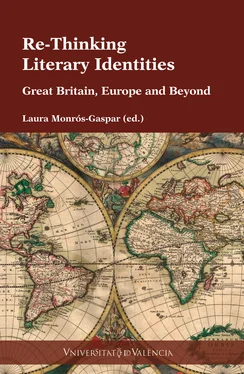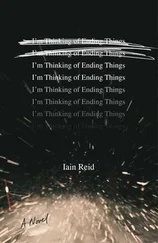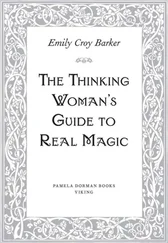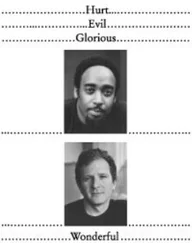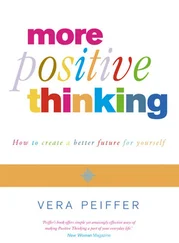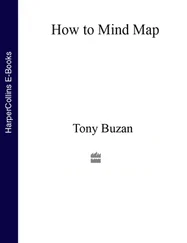AAVV - Re-Thinking Literary Identities
Здесь есть возможность читать онлайн «AAVV - Re-Thinking Literary Identities» — ознакомительный отрывок электронной книги совершенно бесплатно, а после прочтения отрывка купить полную версию. В некоторых случаях можно слушать аудио, скачать через торрент в формате fb2 и присутствует краткое содержание. Жанр: unrecognised, на английском языке. Описание произведения, (предисловие) а так же отзывы посетителей доступны на портале библиотеки ЛибКат.
- Название:Re-Thinking Literary Identities
- Автор:
- Жанр:
- Год:неизвестен
- ISBN:нет данных
- Рейтинг книги:3 / 5. Голосов: 1
-
Избранное:Добавить в избранное
- Отзывы:
-
Ваша оценка:
- 60
- 1
- 2
- 3
- 4
- 5
Re-Thinking Literary Identities: краткое содержание, описание и аннотация
Предлагаем к чтению аннотацию, описание, краткое содержание или предисловие (зависит от того, что написал сам автор книги «Re-Thinking Literary Identities»). Если вы не нашли необходимую информацию о книге — напишите в комментариях, мы постараемся отыскать её.
Re-Thinking Literary Identities — читать онлайн ознакомительный отрывок
Ниже представлен текст книги, разбитый по страницам. Система сохранения места последней прочитанной страницы, позволяет с удобством читать онлайн бесплатно книгу «Re-Thinking Literary Identities», без необходимости каждый раз заново искать на чём Вы остановились. Поставьте закладку, и сможете в любой момент перейти на страницу, на которой закончили чтение.
Интервал:
Закладка:
25 See his webpage < http://www.christopherwhyte.com/>.
26 I have used Black’s notes as the basic source for my review, supplementing and updating them with data from authors’ entries at the Scottish Poetry Library, the Scottish Book Trust, Làrach nam Bàrd, and their own webpages.
27 The book contains poems, photographs and essays, and it includes the verse-letter ‘To Sorley MacLean’ by Seamus Heaney.
28 See his webpage < http://www.anguspetercampbell.co.uk/>.
29 See Galbraith 2013: 570-1.
30 See Mackay 2008, and also Ní Annracháin 2011 for affinities in the ‘nebulous’ dialogue between Irish and Scottish Gaelic poetry.
31 See also his 2011 article, where he substantiates his position with data on Gaelic poetry collections—and their paratexts—published from 2004 to 2010.
32 For self-translation is in itself a wonderfully fertile field for literature. See the whole volume referenced for Krause 2013, edited by Anthony Cordingley.
33 We are grateful to Anne Frater for permission to reprint.
34 Anne Frater herself introduces and reads her poem in < https://www.youtube.com/watch?v=oBdxBU93MaU> at 20:13.
35 One is reminded of the same word as used by Seamus Heaney in his poem ‘Bogland’ when describing Irish territory: ‘We have no prairies/To slice a big sun at evening’. This is the final poem in his 1969 collection, Door Into the Dark .
STAGING A TRANSFORMING GREAT
BRITAIN: TAMLANE, THE SOCIAL
TURN, AND THE 2014 REFERENDUM
Stephe Harrop
Liverpool Hope University
This chapter is born out of the energies and aspirations of the years running up to the Scottish Independence Referendum of 2014, and focuses on a series of theatre works which adapted, appropriated and transformed Scotland and England’s traditional ballads and songs: The Strange Undoing of Prudencia Hart (David Greig, 2011), The Bloody Great Border Ballad Project (Northern Stage, 2013) and Rantin (Kieran Hurley, 2013). It takes as one point of departure Trish Reid’s discussions of contemporary Scottish theatre, and particularly her observation that ‘[t]he popular continues to be a vital medium through which the Scottish nation performs itself to itself’ (2013: 49). It also draws upon Jen Harvie’s assertion (in her 2005 volume Staging the UK ) that ‘national identities are neither biologically nor territorially given; rather, they are creatively produced or staged’, and that cultural activities are one of the means by which ‘people will imagine their communities’ (2007: 2-3; see also Frith 2007: 296). The chapter considers points of intersection between traditional balladry and contemporary theatre, contending that for some British theatre-makers and performers in the years leading up to the 2014 Referendum the staging of traditional music became a key means of exploring urgent questions about identity, nation, and collective transformation. The discussion which follows addresses productions which explicitly sought to activate the convivial, participatory performance interactions associated with the popular performance of Scotland and England’s traditional songs, its analysis drawing on Mairi McFadyen’s phenomenological readings of ballad performance (2013), and notions of ‘the social turn’ in the contemporary arts, defined by Harvie as ‘the recent proliferation of performance and art practices that engage audiences socially —by inviting those audiences to participate, act, work and create together; observe one another; or simply be together’ (2013: 1). It identifies several recurring themes and tropes in the works explored, including a passionate localism which nonetheless positions itself within a global context, an emphasis upon song’s capacity to dissolve boundaries, and an appeal to the utopian potentials of live co-presence, participatory performance, and shared imaginative activity. In this way, the chapter highlights the value of traditional ballads and songs for politically engaged performance-makers (in both England and Scotland) during a turbulent, uncertain, and ebullient historical moment.
A ballad may defined as belonging to ‘a genre of narrative verse and melody, of largely (or effectively) anonymous origin, examples of which have been in existence in one form or another since at least the fifteenth century’. David Atkinson additionally comments that, for some scholars, ‘the quality of being “traditional”, as opposed to “literary” or even “fabricated”’ is a critical distinguishing feature of the ballad (Atkinson 2014: 1). For the purposes of this discussion, a key feature of traditional ballad practice is that these narrative songs, informally shared and freely re-made by musicians and singers across a variety of changing contexts, can be appropriated by popular performers/audiences to engage with the key concerns of their own time and place. Within the British ballad tradition, a particular corpus of songs emerges from the borderlands between England and Scotland. These are known as ‘Border ballads’: a series of extended sung narratives concerning cattle thieves, border warlords or supernatural terrors, often characterized by a bleak delight in violence, tragedy and horror (a legacy of the region’s prolonged history of violence and instability, resulting from repeated attempts to forcibly unify the diverse territories of what is, presently, Great Britain). The borderlands evoked in these songs are not only the meeting point between warring kingdoms and families, but also the frontier between the mundane world and other, enchanted realms. The ballad of Tamlane (or Tam Lin, or Tambling) is one of the oldest Border ballads, and its history is profoundly entangled with changing relationships between Scotland and England (its first mention in print was in 1549, in a miscellany of stories, songs, and legends entitled the Complaynt of Scotland , produced in opposition to Henry VIII’s attempts at military annexation). This song tells the eerie tale of an earthly man stolen or seduced into supernatural captivity, and of the mortal woman who strives to redeem the father of her unborn child from a hellish fate, clinging to Tamlane through a long Halloween night as he undergoes a series of magical metamorphoses.
The present discussion adopts the mythic figure of Tamlane to reflect upon the uses of traditional song within a transforming Great Britain. Shape-shifting, multi-form, and elusive, Tamlane is an apt symbol for the narrative song traditions of Scotland and England, particularly (in this discussion) the ballads of the Borders region, through which national identities have been asserted, subverted, and re-made across the centuries. Harvie observes that ‘if national identities are creatively staged, that means they are dynamic’ (2005: 3), and the ballad’s comparably protean form (see Pattie 2016: 28, 30) makes it an apt medium for asserting and challenging notions of identity at times of social anxiety and cultural change. Beginning with a brief consideration of Walter Scott’s Minstrelsy of the Scottish Border (1802-3), this chapter traces the uses of traditional songs both to endorse notions of a unified Great Britain, and as a means of revisiting British, Sottish and English identities in a twenty-first century context, through modern theatre-makers’ contestations and re-makings of ballad narratives and texts, and their explorations of ballad-inspired or ‘ceilidh-play’ dramaturgies.
BORDER BALLADS, SCOTT’S MINSTRELSY , AND THE BIRTH OF GREAT BRITAIN
The Minstrelsy of the Scottish Border was first published in 1802-3. It is an antiquarian collection of ballads, complete with extensive scholarly commentaries, which attempted to ‘attract the attention of persons of taste and culture’ to the old songs of the Borders (Scott 1902: vol. 1, xviii). This project was significantly informed by Walter Scott’s conservative politics, and by the emerging literary nationalisms (Anderson 2006) which his career would come to exemplify. Formal union between England and Scotland had been enacted in 1707, although violent resistance to this had continued until the middle of the eighteenth century. Thereafter, the closing decades of the century had been alarmed by new fears that revolutionary ideas from France might radicalize disaffected groups within Scotland. Scott (a lowland Presbyterian, a lawyer by profession, and a lifelong Tory, who would in 1820 become the first Baronet of Abbotsford) was equally unsympathetic to both Jacobite and Jacobin influences. He desired to see Scotland ‘take complete advantage of the 1707 Act of Union by playing its full part in the newly united political entity of Britain’ (Crawford 1992: 18), entering enthusiastically into new marketplaces, economic networks, and intellectual discourses.
Читать дальшеИнтервал:
Закладка:
Похожие книги на «Re-Thinking Literary Identities»
Представляем Вашему вниманию похожие книги на «Re-Thinking Literary Identities» списком для выбора. Мы отобрали схожую по названию и смыслу литературу в надежде предоставить читателям больше вариантов отыскать новые, интересные, ещё непрочитанные произведения.
Обсуждение, отзывы о книге «Re-Thinking Literary Identities» и просто собственные мнения читателей. Оставьте ваши комментарии, напишите, что Вы думаете о произведении, его смысле или главных героях. Укажите что конкретно понравилось, а что нет, и почему Вы так считаете.
